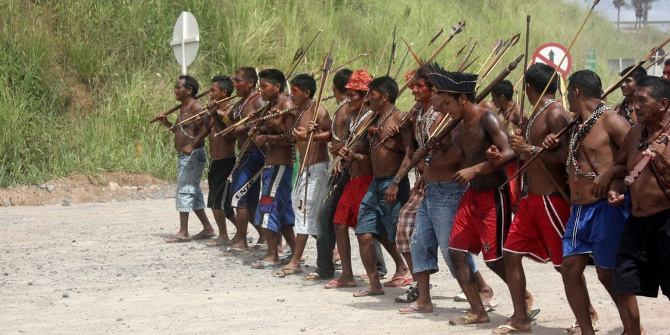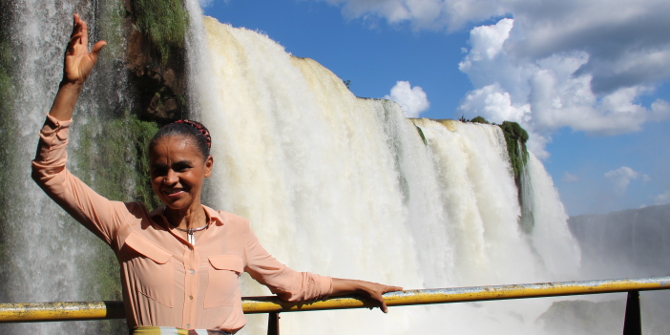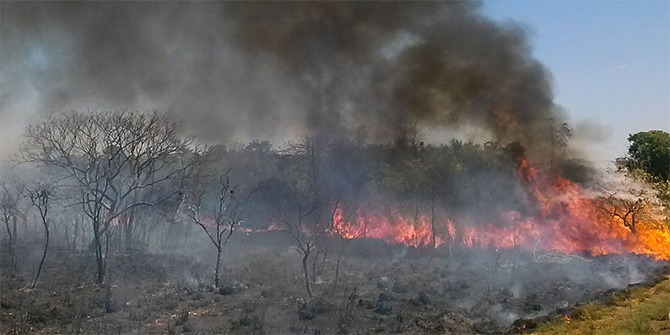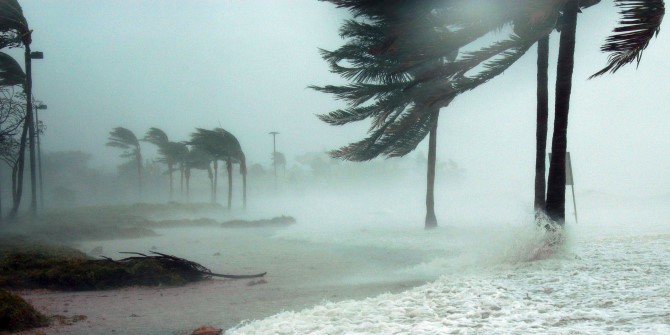

If the problems and potential of environmental licensing are not taken seriously in this year’s policy debates and electoral campaigns, future development and economic recovery could trigger environmental degradation far more serious than any single mega-dam project, write Mark S. Langevin and Olivia Smith (both George Washington University).
Since the Belo Monte debacle and with increasing private-sector interest in alternative renewables, Brazil’s energy authorities have begun to openly discount the future construction of mega-dam projects.

While mega-dams might deliver cheap electricity, their viability is questionable under the “triple bottom line” of economic efficiency, social inclusion, and environmental sustainability.
Many have celebrated this change of approach, but environmental licensing in Brazil still creates many critical policy challenges for advocates of sustainable development.
The costs of environmental licensing and hydroelectricity
In the 1980s Brazil instituted the National Environmental Policy, establishing the environmental-licensing mandate for activities that impact on use of natural resources.
The social and environmental costs associated with the licensing of large hydroelectricity projects rose from 6 percent of total project costs in the 1990s to 20 percent by 2010. Mounting licensing costs are largely associated with construction of supporting infrastructure and relocation of adjacent populations, as well as the creation of the dam reservoir.
Together, these outlays represent 88 percent of the overall social and environmental costs of licensing. The cost of clearing out reservoirs for mega-dams shot up from 12 percent in the 1990s to over 44 percent of all land- and water-related expenditures. Road construction rose from 25 percent of all relocation costs in the 1990s to 38, whereas population relocation expenses increased from 27 to 36 per cent. Improved enforcement of environmental and social safeguards and the rising cost of environmental-licensing compliance can add up to 8 percent of project costs.
In short, licensing of hydroelectricity projects is not cheap.
Crucially, however, only hydroelectric projects require the detailed cost accounting associated with environmental licensing. Thermoelectric and alternative renewable sources are not required to disclose such outlays to regulators or investors.
Despite the added burden, hydroelectricity remains approximately 20 percent cheaper than the fossil-fueled thermoelectric plants on which Brazil relies to balance its expanding solar and wind generation sources.
The “triple bottom-line” requires full transparency of all project costs and the modernisation of the country’s environmental-licensing process for all forms of electricity generation. Investors, policymakers, consumers, and citizens should understand not only the costs, but also the benefits of each individual project. This imperative becomes all the more important with the government’s intention to privatise Eletrobras.
The state of environmental licensing in Brazil
Brazilian environmental licensing suffers from institutional flaws that make the process more expensive for hydroelectricity and less effective for all energy projects. Even ABEMA, which represents Brazil’s state-level environmental-protection agencies, finds that it “has become a bureaucratic administrative process” with poor outcomes.
Environmental licensing in Brazil does not focus resources on impact assessments and mitigation strategies. Rather, the administrative process is centred on project approval and rapid implementation.
The Organisation for Economic Cooperation and Development has noted that “potential environmental impact tends to be underestimated or played down, and project proponents rarely propose adequate measures to mitigate the impact or monitoring programmes”.
Problems with the environmental-licensing process are also compounded by a significant lack of human resources at every relevant level of government.
The number of IBAMA inspectors has fallen in recent years, degrading the federal government’s capacity to coordinate and supervise the process. But particularly grave is the understaffing of the federal agency for Brazilian indigenous peoples (FUNAI), since these groups are often negatively affected by dam projects.

In 2013 FUNAI processed 2958 environmental-licensing applications with only 17 professional-technical staff. Last year FUNAI’s budget was halved.
Overcoming these challenges would require “capacity building, including greater staffing and professional development, to ensure effective and efficient licensing of all energy infrastructure projects”.
For example, most Brazilian states and municipalities with direct regulatory supervision of energy projects do not have the managerial capacity to effectively regulate and support environmental licensing of large projects. Local government authorities may also be “excessively eager to sacrifice local or even regional environmental quality by approving environmentally harmful investments and activities” that create jobs and bolster the local economy.
Federal supervision and support, including coordination with local agencies, could be critical to strengthening organisational capacity in assessing impacts and designing mitigation strategies alongside project managers and construction contractors.
Finding the right Terms of Reference, and sooner rather than later
This challenge is clear from frequent delays in issuing the terms of reference (ToR) that frame the environmental-licensing process for each project.
The ToR details the scope and content of an environmental impact assessment, which is the first step in the licensing process. ToRs should provide a list of potential environmental and social impacts that require prevention or mitigation efforts.
In practice, state level agencies often adapt generic ToR templates rather than developing content specific to each project. For example, in the state of Minas Gerais, hydropower ToRs replicate a standard template, known as the “simplified environmental licensing” process, that is provided by the state environmental protection agency.
Such ToRs are often deficient and lead to poor environmental impact assessments and further project delays. Moreover, since project contractors farm out these kinds of studies, there is an inherent interest in omitting potentially costly environmental issues.
IBAMA, the federal government’s environmental protection agency, believes that licensing would be sped up if proponents took environmental studies more seriously and ensured their quality from the outset. The World Bank, meanwhile, has estimated that the length of the arduous ToR-issuing process could be streamlined down from one year to as little as three months.
On this front, the federal government recently piloted the Integrated Environmental Assessment, which provides a ToR template for all projects in one area or river basin. This instrument may streamline the process, but a basin-wide assessment will necessarily be less thorough on the specific environmental and social impacts of individual dams.

Environmental licensing and Brazil’s 2018 elections
Last year Federal Deputy Mauro Pereira (PMDB) and the Brazilian congress attempted to pass environmental-licensing legislation to reduce judicial uncertainty and provide all jurisdictions with a legal framework for carrying out this regulatory process. The proposed legislation emphasises “flexibility” at all levels of government and exempts agricultural activities from the usual requirements.
IBAMA openly criticised Pereira’s legislation, claiming that it would weaken licensing, not strengthen it. Opponents also claimed that “flexibility” would create a race to the bottom as state and local jurisdictions prioritised investment in power generation and extractive industries over environmental protection.
Brazil will not build any mega-dams during this election year, but it is uncertain whether the national congress will revisit this critical issue before the country elects a new president in October.
The only credible environmentalist with any chance of winning the presidential election, Marina Silva (Rede), criticised both the current government of President Michel Temer (PMDB) and the former administration of Dilma Rousseff (PT) for their approach to environmental protection. She is currently polling in third place. Even were she to win, it is far from certain that a new government could enact reforms to both strengthen and streamline the environmental-licensing process.
Recent steps away from mega-dam projects lessen the urgency, but Brazil still needs to make sure that environmental licensing is taken seriously in this year’s policy debates and electoral campaigns.
If it is not taken seriously, the effects of economic recovery and development could trigger environmental degradation far more serious than that of any single mega-dam project.
Notes:
• The views expressed here are of the authors and do not reflect the position of the Centre or of the LSE
• Please read our Comments Policy before commenting





